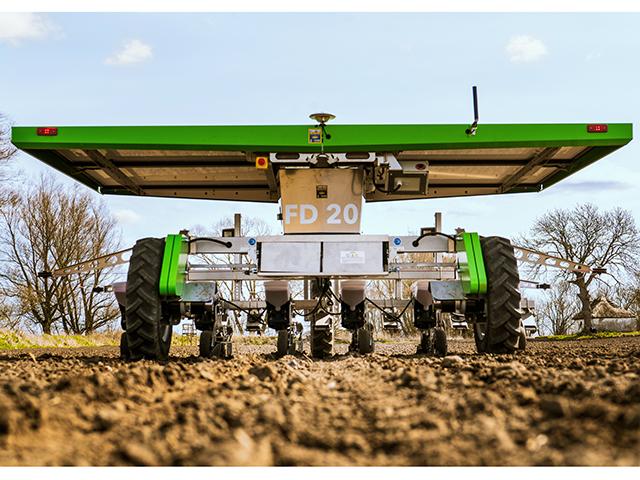We'd Like To Mention
"Star Wars" Comes to the Farm
The "Star Wars" movies often depict humans relying on droids, drones and robots to help perform myriad tasks -- from the simplistic to the sophisticated. These automated high-tech devices simplified everyday lives and allowed people to focus on other duties.
But, technology perceived as science fiction from a galaxy far, far away is finding its way to 21st-century agriculture. Fueled by advances in artificial intelligence, sensors and robotics, agbots promise to transform how you go about your daily work in spring, summer, fall and winter.
Necessity is making robotics increasingly attractive and has set the stage for rapid acceleration in agriculture. The industry faces a shortage of labor and rising labor costs. Farmers continue to look for ways to judiciously apply inputs. Greater environmental awareness by consumers demands farmers produce food more sustainably. Agbots can automate many of the labor-intensive tasks and facilitate precision agriculture.
Early applications for farming have focused on high-value specialty crops like fruits and vegetables. More recently, companies -- from start-ups to established equipment manufacturers -- have introduced machines that provide a glimpse of the potential automation offers for row-crop and small-grain farmers. Drones that scout fields and apply pesticides. Autonomous platforms to weed crops, transport and spread fertilizer, or steer tractors and guide grain carts. Sprayers that detect and target only weeds instead of broadcast application.
Despite these capabilities, robotics in agriculture remains fairly limited compared to other industries. Several challenges must be overcome before there can be widespread adoption. Logistically, every farm and every field are different. Soils and terrain vary and can be cluttered with unforeseen obstacles. Weather is unpredictable. Reliable broadband connectivity and signals are sporadic. Operating equipment in the field that relies on sensitive computer chips, circuit boards and codes must stand up to harsh conditions.
P[L1] D[0x0] M[300x250] OOP[F] ADUNIT[] T[]
In addition, a report from market research firm IDTechEx, "Agricultural Robotics Market 2022-2032," identifies other factors that may slow the adoption rate of agricultural robots.
-- Lack of Trust. Unlike other industries, agriculture has relatively low margins coupled with the cyclical nature of farm income. A farmer generally only has one chance per year to get it right -- planting, spraying, harvest, for example. A failure likely results in lost income. Will a farmer hand over a specific field operation to an autonomous machine and be guaranteed it will perform as planned?
-- High Costs. As field robotics are introduced, the up-front cost may deter farmers or make it impractical. Will there be a return on investment? Will renting be an option rather than purchasing?
-- Inferior IT Infrastructure. Agbots require a robust communication system -- Wi-Fi, cellular, etc. -- to access GPS signals. And, the communication systems require the support of information technology (IT) infrastructure. Many rural areas have limited infrastructure and broadband coverage. Such barriers could also limit the geographical deployment of agbots.
-- Insufficient Funding. Developing an agbot costs $50 million to $100 million in capital to scale and research. Many start-ups struggle to raise funding. Venture capitalists are reluctant to invest because of the long payback time, immature technologies and limited applications.
-- Data Demands. Robotics technology requires the constant collection and analyzing of data. Farmers have many questions about ownership and monetization of their data. New laws/regulations may be needed.
There are many challenges ahead for the fledging industry, but the potential of agbots is undeniable. That's a force to be reckoned with in any galaxy.
**
-- Write Gregg Hillyer, 2204 Lakeshore Dr., Suite 415, Birmingham, AL 35209, email gregg.hillyer@dtn.com, or follow Gregg on Twitter @GreggHillyer
[PF_0322]
(c) Copyright 2022 DTN, LLC. All rights reserved.




